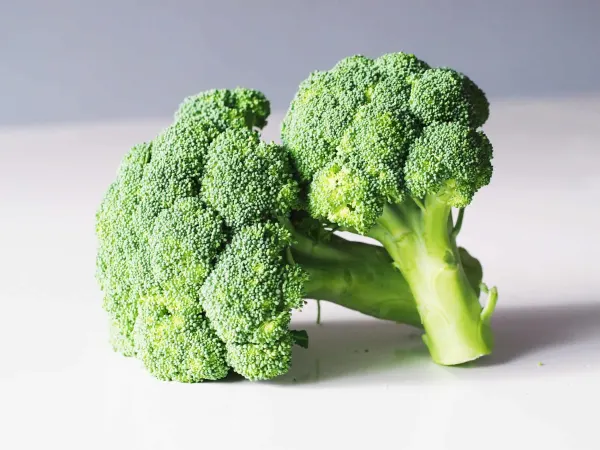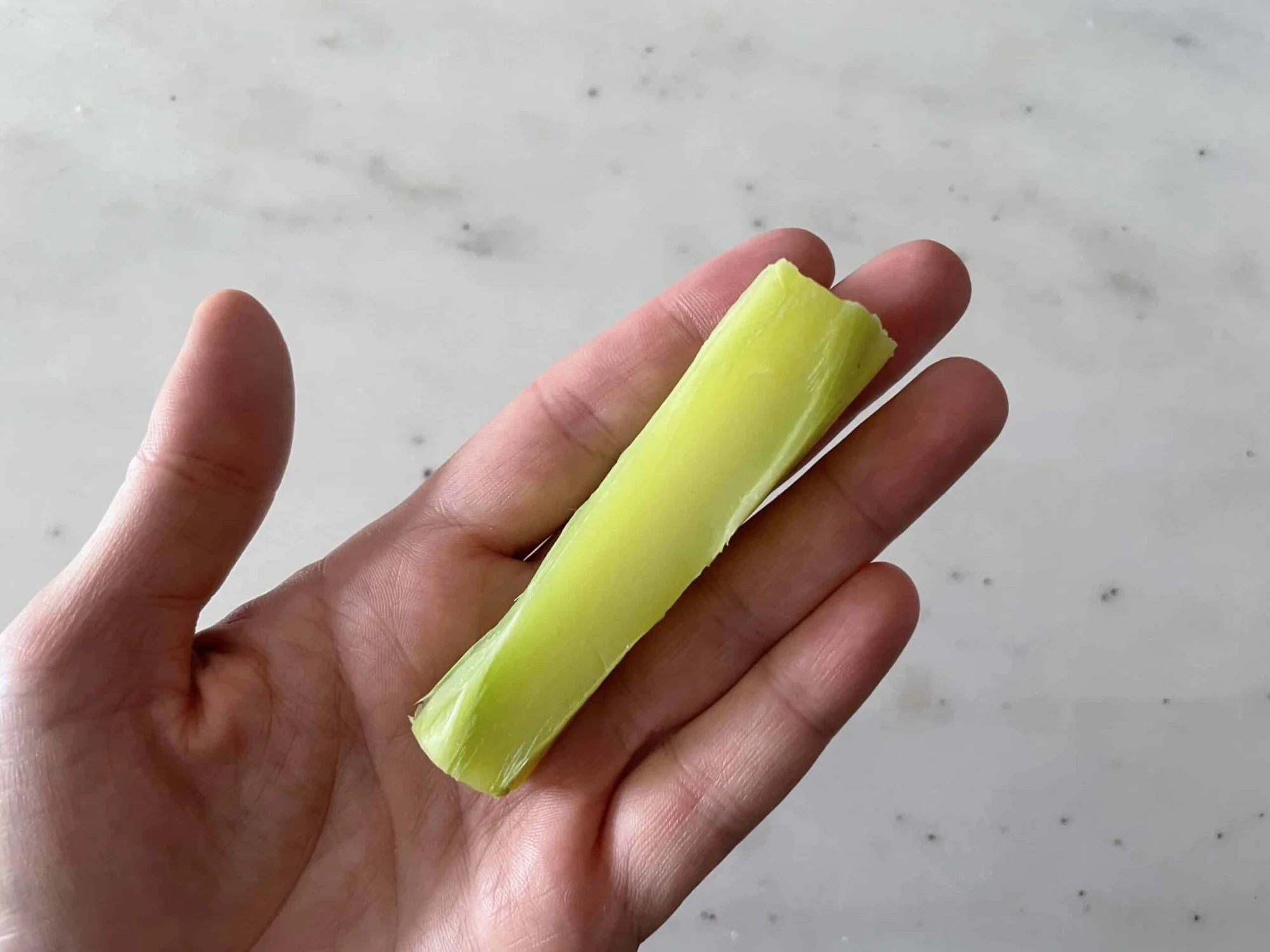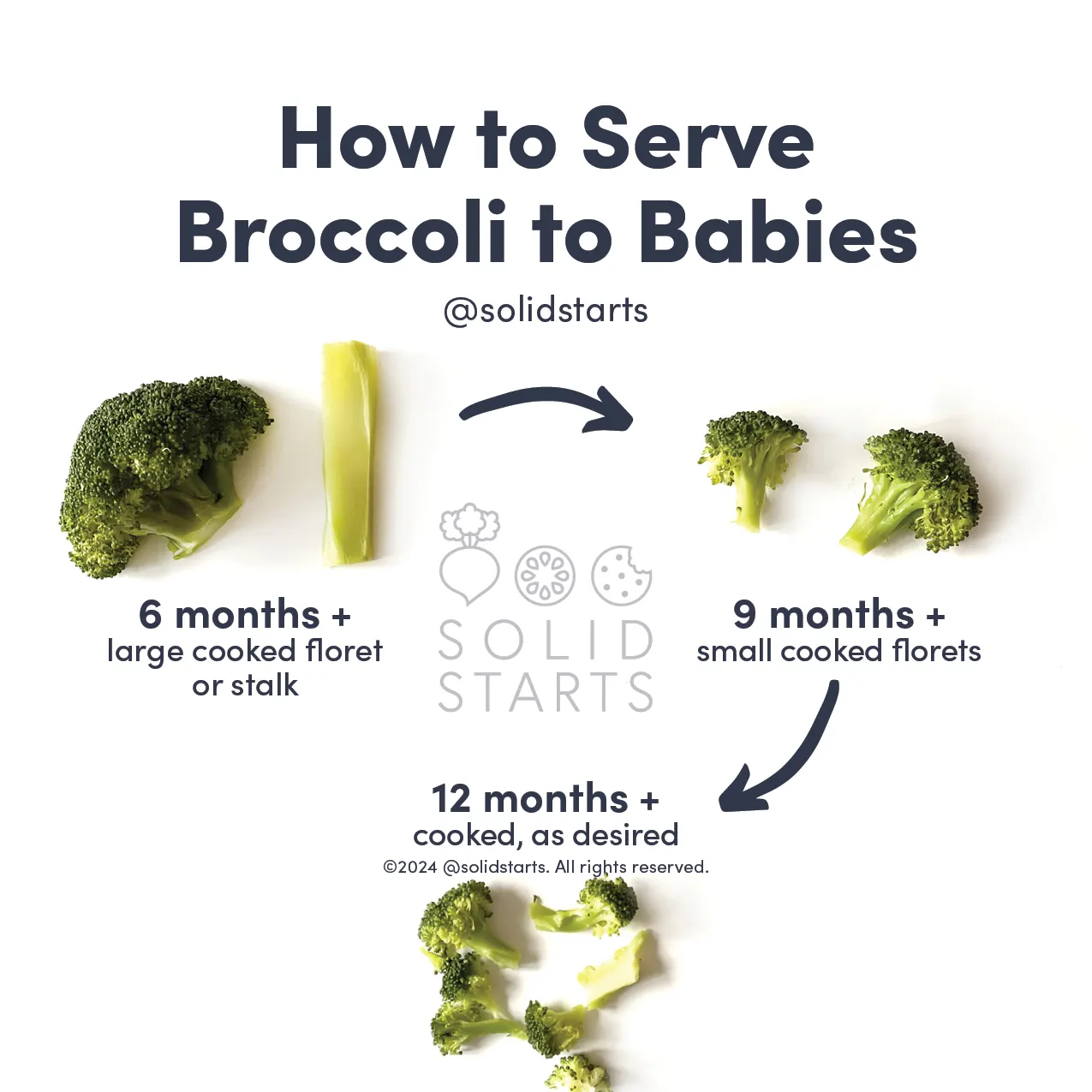Access our First Foods® Database in the Solid Starts App.
Learn moreBroccoli
Vegetable
Age Suggestion
6 months
Iron-Rich
No
Common Allergen
No

When can babies have broccoli?
Broccoli may be introduced as soon as baby is ready to start solids, which is generally around 6 months of age.
In Italian, the name “broccoli” translates to the “sprouts of cabbage,” which is appropriate given the edible flower’s origins. The broccoli bloom is a brassica—a diverse plant family that includes collard greens, gai lan, kale, kohlrabi, turnip, and many other common vegetables bred thousands of years ago from wild cabbage in the lands around the Mediterranean Sea.
How do you serve broccoli to babies?
Every baby develops on their own timeline, and the suggestions on how to cut or prepare particular foods are generalizations for a broad audience.
6 months old +:
Bigger is better! At this age, larger pieces of food are easier for babies to grab and munch on, which helps baby learn the contours of the mouth. Aim for florets with crowns about the width of three adult fingers pressed together and steam it to your liking: the longer you cook, the softer the food. Firmer foods are typically easier for baby’s tongue to push out of the mouth when too much makes its way in. Softer foods present a lower choking risk, though they often cause more intense gagging. If you decide to offer a firmer floret, minimize choking risk by cutting the floret lengthwise so that the stem is no longer round. Alternatively, mash or finely chop the florets and let baby scoop up the food with hands or a spoon.
Another option is to offer a large stick cut from the main stalk and steamed until soft. Simply peel the stalk to remove the tough outer layers, then cut the stalk into rectangular sticks about the thickness and length of two adult fingers pressed together. Make sure the sticks are not cylindrical, as that shape poses a higher risk of choking should a piece break off in baby's mouth.
9 months old +:
Try serving small, bite-sized pieces of cooked broccoli stem or floret. If baby has a hard time picking up the small pieces, just move back up in size to larger cooked florets and model how baby can take bites.
12 months old +:
This is a great time to introduce a utensil, pre-loading with bite-sized pieces of cooked broccoli as needed. As the child develops their tearing and chewing skills, you can decrease the amount of time you are steaming or cooking the broccoli a bit. Follow the child’s ability (and your gut instinct) and incorporate broccoli into any dish as desired.


How to prepare broccoli for babies 6 months +
Feeling anxious? Have a look at our First 100 Days: Daily Meal Plan for Starting Solids.
Videos
Is broccoli a choking hazard for babies?
Yes, raw or undercooked broccoli is firm and hard to chew, qualities that increase the risk of choking. To reduce the risk, prepare and serve broccoli in an age-appropriate way as described in the How to Serve section. As always, make sure you create a safe eating environment and stay within an arm’s reach of baby during meals.
Learn the signs of choking and gagging and more about choking first aid in our free guides, Infant Rescue and Toddler Rescue.
Is broccoli a common allergen?
No. Allergies to broccoli are rare, but possible. Individuals who are allergic or sensitive to other members of the cruciferous family, such as mustard greens and cauliflower, may also be sensitive to broccoli. People who are allergic to mugwort may be allergic to broccoli or experience Oral Allergy Syndrome (also known as pollen-food allergy). Oral Allergy Syndrome typically results in short-lived itching, tingling, or burning in the mouth and is unlikely to result in a dangerous reaction.
As you would when introducing any new food, start by offering a small quantity for the first few servings. If there is no adverse reaction, gradually increase the quantity over future meals.
Is broccoli healthy for babies?
Yes. Broccoli is an excellent source of vitamin A, which supports eye health. Broccoli also contains vitamin B6 and folate, for growth and brain development, as well as fiber for healthy digestion. Powerful phytochemicals, like sulforaphane, also abound in broccoli and may inhibit the development of several types of cancer.
★ Tip: Steaming or microwaving broccoli (as opposed to boiling) helps retain its nutrients. Roasting broccoli works, too, though this method may yield a tougher texture. For young babies, steamed broccoli has the benefit of softness for their tender gums.
What are some great first foods for babies?
There are many wonderful options. Look for foods that are easy for baby to feed to themselves, that are low in choking risk, and that offer nutrients babies need, such as iron. A few of our favorite first foods include cooked broccoli, oatmeal, and mango pits.
What do I do if baby won't eat?
End the meal and follow up with a breast or bottle feed. Never pressure a baby or child to eat; it will only worsen food refusal in the long run. Babies refuse food for different reasons, such as teething, illness, sleepiness, or lack of energy or interest in learning a new skill. For information on why baby may refuse to eat, see our guide, Handling Food Refusal.
Our Team
Written by
Expert Tips Delivered to Your Inbox
Sign up for weekly tips, recipes and more!
Copyright © 2026 • Solid Starts Inc







